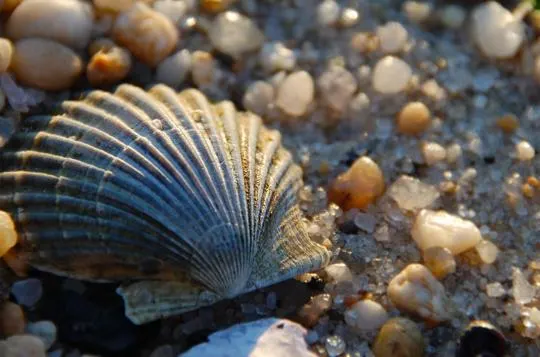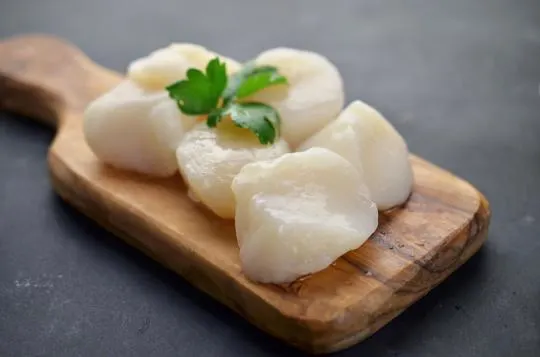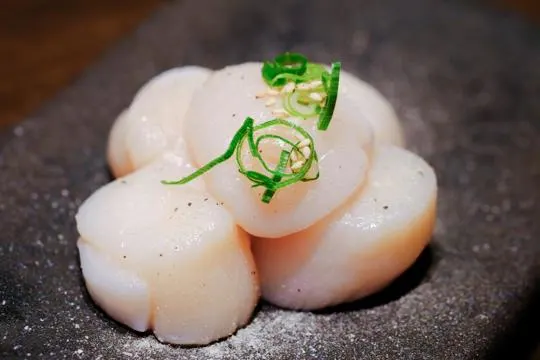Summary of key points
The main difference between bay scallops and sea scallops lies in their size and flavor. Bay scallops are smaller in size, about the size of a dime, and have a sweeter, milder taste compared to larger sea scallops. Sea scallops are typically larger, about the size of a quarter, and have a more pronounced seafood flavor. This also affects their cooking methods, as sea scallops are better suited for searing or grilling, while bay scallops work well in dishes like pasta or stir-fries. Ultimately, both types of scallops offer a delicious and versatile option for seafood lovers.
Bay scallops and sea scallops aren’t just the twins of the ocean. Nope. They’re more like distant cousins. Twice removed. Big difference.
We’ve all been there. Standing in the seafood aisle, staring. Bay on the left, sea on the right. One’s petite; the other’s a hefty chunk.
We learned the hard way. That dinner party? A slight mix-up turned us into accidental chefs.
Sea scallops are the giants. Think dinner plates. Bay scallops? Tiny, sweet morsels. Perfect for a quick sear, they tell us.
Ever tried juggling the two? We did. Spoiler: It doesn’t end well. But hey, we discovered gold. Size matters. Flavor marvels.
With us, unravel this scallopy confusion. No eyes glazed over. Just straight-up, easy peasy scallop wisdom.
What are Bay Scallops?

Bay scallops are small, succulent mollusks that come in a rainbow of colors, such as white, pink and orange.
Their size makes them ideal for fast cooking like sautéing or broiling.
Harvested in shallow bays and estuaries along the Atlantic coast, they are seen as a delicacy and cost more than sea scallops.
In addition, they don’t last as long as the latter. So, it’s best to enjoy them fresh or freeze them shortly after harvest.
Although these two types of scallops can be used interchangeably in recipes, cooking times may vary due to their sizes.
Bay and sea scallops both offer a unique flavor, perfect for any seafood dish.
Bite-sized or meaty, they are delicious.
What are Sea Scallops?

Sea scallops are a type of mollusk you can find in oceans around the world.
Famous for their large size and sweet flavor, these shellfish are prized for their tender texture.
They have a round shape with ridges on their shells.
Their creamy white meat is firm and succulent.
Sea scallops can reach up to 2 inches in diameter. These scallops can swim.
They use their powerful adductor muscles to “clap” their shells together, creating a jet-like motion.
When it comes to cooking, sea scallops are very flexible.
Try searing, grilling, or broiling them.
They go well with ingredients like lemon, garlic, butter, and herbs.
Health wise, they’re great: protein-packed, low-fat, and rich in vitamin B12 and omega-3 fatty acids.
All of this contributes to heart health.
Differences Between Bay Scallops and Sea Scallops

Bay scallops and sea scallops may look similar, but they have distinct differences.
Size and Appearance
Bay scallops are typically smaller, around 1 to 2 inches in diameter.
They have a delicate texture and are more tender.
Sea scallops are larger, ranging from 2 to 3 inches.
They have a firmer texture and a slight sweetness.
The color of both types varies from creamy white to pale orange, with bay scallops often being more translucent.
Shells of bay scallops are smoother, while sea scallop shells are ridged.
This provides protection for sea scallops against predators.
Bay scallops are best for dishes that need small portions, such as salads or pasta.
Sea scallops are better for searing or grilling because of their larger size and ability to caramelize and brown.
In short, size and appearance are the key differences between bay and sea scallops.
Knowing these differences can help you pick the right scallop for your cooking.
Flavor and Texture
Bay scallops are milder and sweeter than sea scallops. Plus, they’re smaller and more tender.
Sea scallops are meatier, larger, and perfect for grilling.
Bay scallops have an added brininess from the coast.
They absorb flavors quickly when cooked.
Sea scallops are saltier and have a robust flavor.
The larger size gives them a satisfying chewiness.
It’s all up to your taste preferences and the dish you’re making.
Both types have unique qualities that give seafood dishes a special flavor and texture.
Habitat and Harvesting
Bay and sea scallops differ in terms of habitat and harvesting.
Bays typically reside in shallow waters, like bays, estuaries, and coves.
Hand-harvesting or using small dredges is the most common way of collecting them.
Sea scallops, on the other hand, live in deeper waters such as the Atlantic Ocean.
Depths of 20 to 200 meters are where they can be found.
These scallops are harvested by large commercial fishing boats, using dredges or trawlers.
It’s fascinating that both types of scallops are harvested for their delicious meat yet require different harvesting methods.
This guarantees that each type of scallop is harvested efficiently and sustainably, preserving their populations for future generations.
Cooking and Culinary Uses
Bay scallops and sea scallops are both very versatile when it comes to cooking.
They can be seared, grilled, sautéed and added to soups or stews.
Bay scallops have a milder taste, making them great for subtle recipes.
Sea scallops have a stronger flavor that is good with bolder seasonings.
Bay scallops are very tender, so they need quick cooking.
Sea scallops can be cooked longer without getting tough.
Sea scallops are often served whole or in large coins.
Bay scallops are generally used as an ingredient and not as the star of the dish.
Similarities Between Bay Scallops and Sea Scallops

Bay and sea scallops are two similar bivalve mollusks.
Both have round fan-like shells and a sweet, delicate flavor.
This makes them popular in markets and restaurants all over the world.
Both types of scallops can be cooked in various ways, such as sautéing, broiling, baking, or grilling.
This versatility allows chefs to get creative with their dishes.
What’s more, these shellfish are packed with protein, omega-3 fatty acids, and essential minerals like zinc and magnesium.
This offers many health benefits. Additionally, both bay and sea scallops have a very succulent texture and a distinct sweetness.
This makes them ideal for pairing with bold flavors or delicate sauces.
Raw preparations, like sushi and ceviche, are also a great way to enjoy these shellfish.
Their delicate meat makes them perfect for highlighting their natural taste.
In conclusion, bay and sea scallops have many similarities.
They offer a delicious seafood experience that showcases the unique qualities of these exquisite shellfish.
Nutritional Comparison
Bay and sea scallops differ in size. Bay scallops are smaller and therefore have fewer calories.
Sea scallops have more protein, though.
Both types of scallops offer similar vitamins and minerals.
For example, B12 and zinc, selenium, and phosphorus.
But, sea scallops have more sodium.
Too much sodium isn’t good for your health.
Enjoy bay or sea scallops by grilling or sautéing with olive oil.
Choosing the Right Scallops for Your Dish
Choosing the right scallops for your meal is a must.
With numerous options, it’s important to understand the difference between bay and sea scallops before deciding.
Bay scallops, also called “bays,” are small.
Found along the Atlantic coast of North America, they have a sweet, delicate taste.
Cooking quickly, they are ideal for dishes requiring less time.
Sea scallops, on the other hand, are larger and meatier.
Found in the North Atlantic Ocean, they are buttery and rich with a slightly sweet flavor.
Their size makes them versatile, whether you want to sear or bake them.
Texture-wise, bay scallops are softer and more tender.
This is because they have a higher water content.
Sea scallops, though, have a firmer texture due to their lower water content.
Both types can be used for various dishes, such as pasta, salads, or appetizers.
But, always consider the flavor profile and cooking time when choosing between bay and sea scallops.
Conclusion
After comparing bay scallops and sea scallops, one can conclude that there are some key differences.
Bay scallops are smaller, sweeter in taste and are generally found off of the coast of New England or Gulf of Mexico while sea scallops usually come from much bigger bodies of water.
They’re similar in shape, provenance, and preparation but they’re scooped up at different depths from vastly different locations.
Whether you enjoy the briny, salt-intense flavor of a deep-sea scallop or prefer the sweet creaminess of a bay variety, each offers something unique.
With so many options available to chefs and seafood lovers alike, it becomes a question of where your tastes will take you rather than which style is superior than the other.
An adventurous eater may want to try them both to determine which one captivates their taste buds more.

Leave a comment